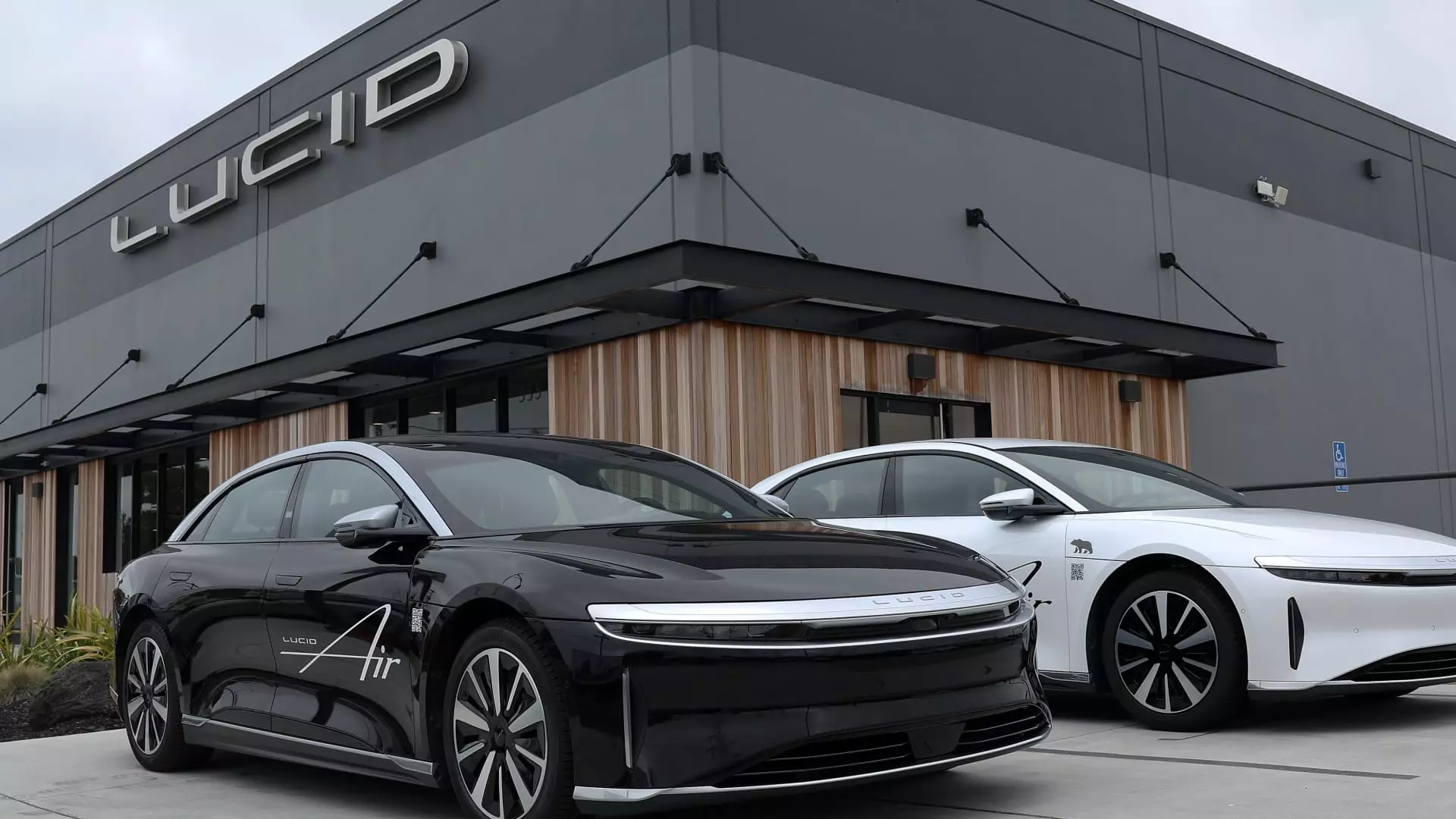In the highly competitive electric vehicle (EV) market, Lucid Group has emerged as a notable player, albeit facing its fair share of challenges. As the company recently disclosed its third-quarter financial results, it showcased a slight beat against Wall Street expectations, a development that has reignited some investor interest. Reported figures indicated an adjusted loss per share of 28 cents, a marginal improvement over the anticipated 30 cents, and revenue that reached $200 million, edging out expectations of $198 million. Despite these modest victories, the overarching narrative remains one of escalating losses, emphasizing the complexities traditional automakers face in the burgeoning electric vehicle sector.
Lucid’s CEO, Peter Rawlinson, characterized the quarter as a “landmark” for the company, citing notable achievements such as record deliveries of 2,781 vehicles. While these numbers highlight a positive development in their production capabilities, it juxtaposes sharply against the backdrop of a staggering net loss that widened to $992.5 million—an increase from $630.9 million the previous year. The contrast between record deliveries and mounting losses encapsulates the tension present within the EV sector; rapid growth often comes with significant financial burdens.
Rawlinson’s optimism appears bolstered by strategic cost-cutting measures that the company implemented. As they navigate the treacherous waters of the automotive industry, companies like Lucid must strike a balance between innovation and fiscal responsibility. However, the stark reality remains that widely rising costs in research and development, which jumped 40.1% to $324.4 million, are outpacing revenue growth. Similarly, expenditures in selling, general, and administrative costs rose by over 20%. These financial pressures call into question the sustainability of Lucid’s ambitious growth trajectory.
Lucid’s stock exhibited fluctuations indicative of investor sentiment in a turbulent marketplace. After the earnings report, shares soared more than 8% in after-hours trading, reversing some of the losses that had decreased the stock’s value by approximately 45% throughout the year. This volatility in stock price reflects broader investor apprehension stemming from Lucid’s performance amid rising competition from established automakers and newer entrants in the EV space. The company’s decision to execute a stock offering of 262.5 million shares—a move that raised eyebrows among analysts—was framed by management as a necessary step to secure capital for ongoing operations. The rationale behind these stock offerings connects directly to their financing needs for expansion plans set through 2026.
Amid this financial turbulence, the outlook for Lucid remains cautiously optimistic, particularly with concrete plans for expanding production capacity. Lucid’s commitment to produce approximately 9,000 vehicles by the end of this year represents a considerable goal, especially as they prepare to launch the much-anticipated Gravity SUV. The successful introduction of this new midsize platform could catalyze growth, further solidifying Lucid’s standing in the marketplace and attracting a broader consumer base.
Moreover, the company is undertaking significant capital expenditures in the range of $1.3 billion, a reduction from initial forecasts. This reflects a proactive approach to managing costs while bolstering their manufacturing capabilities—an essential move as they scale operations across North America and foray into international markets, including Saudi Arabia, where a new plant is in the making.
While Lucid Group has showcased resilience with its delivery records and a beat on quarterly revenue expectations, significant challenges lurk ahead. The widening financial losses accentuate the precarious position in which they find themselves—a position characterized by rapid innovation demands and critical investor scrutiny. As the company prepares for the launch of the Gravity SUV, all eyes will be on Lucid’s ability to translate production capacity into sustained profitability amidst fierce competition and a transformative industry landscape. The coming months will demand not just innovative product offerings, but a carefully balanced fiscal strategy that can ensure long-term viability.

